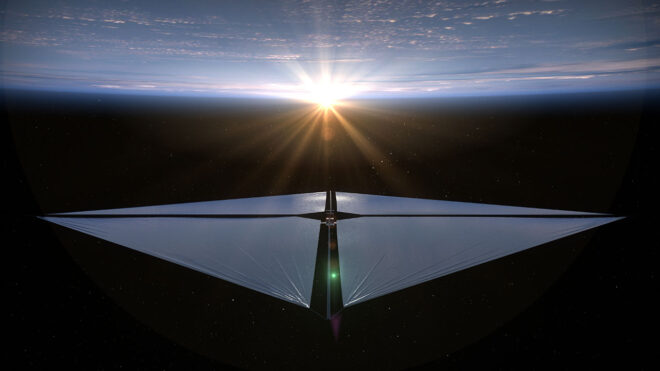US National Aeronautics and Space Administration NASAReally tested the next generation solar sail in space will.
“Sailing through space may sound like something out of science fiction, but the concept is no longer limited to books or the big screen.” Making the statement, USA’s National Aeronautics and Space Administration NASA said, “Advanced Composite Solar Sail SystemThe new generation solar sail called ” Preparing to test it for real in space. A prototype system developed by Rocket Lab electron The institution that will send its rocket into space on April 23, With this infrastructure, it hopes to obtain spacecraft that can move without using rocket engines.. The sun is constantly emitting photons in all directions, and when these photons reach or hit the solar sail, a small amount of momentum is created that provides propulsion. When this happens continuously, movement can be made, albeit slowly. NASA, which designed the sail system in a foldable structure so that it can be sent with standard rockets, has been working on this issue for a really long time. The institution shows a large-scale example of how the system will work in the animation video below.
NASA had previously come to the fore with the Dragonfly vehicle. For those who missed it NASA, It will turn the nuclear-powered Dragonfly spacecraft into reality to explore Saturn’s largest moon, Titan. If all goes well, Dragonfly will reach Titan in 2034. It is an aircraft with multiple engines, which you can see below, and will perform numerous scientific analyzes on Titan. Dragonfly will be able to take deep samples by drilling a hole in the frozen surface of Titan with the special system underneath, and since it can fly, it will be able to expand its tests and analyzes by going almost anywhere on Titan. The following explanation on Wiki for Titan, which is approximately 1.2 billion km away from Earth: is being passed:
“Titan, Saturn’s moon, is the second largest satellite in the Solar System. Titan, like Ganymede, is slightly larger than Mercury. Its atmosphere, which consists largely of nitrogen and is not as thick as that of any other moon in the Solar System, is thought to be similar to the atmosphere of early Earth. The spacecraft planned to be sent as part of NASA’s Dragonfly mission will investigate the possibility of living things on Titan. The possibility of marine creatures being found in the water bodies on Titan (oceans, lakes and seas made of methane liquid) is being investigated. “According to previous research data, it is thought that there is an environment in which bacteria can exist in Titan’s oceans.”
